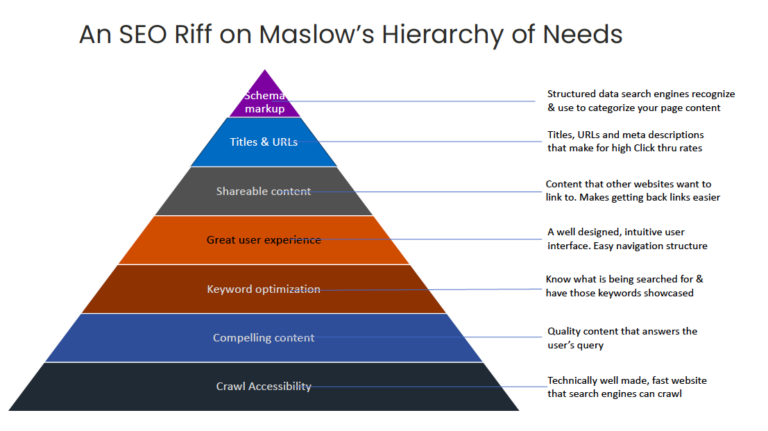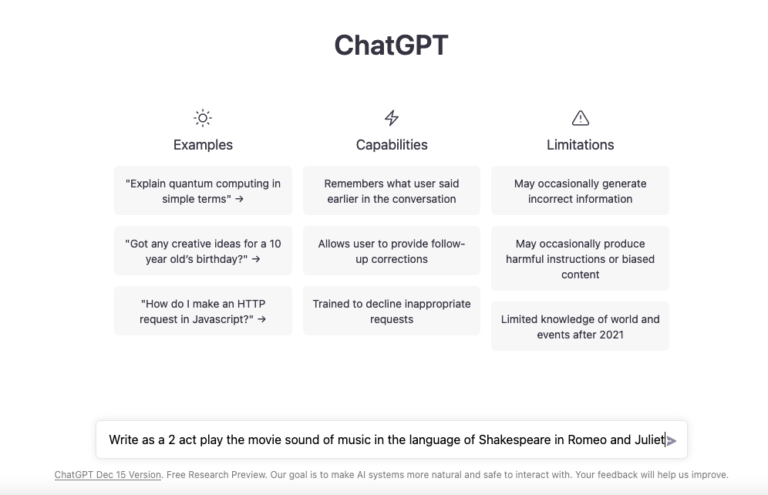In its search for new clients, a dental office is a local business that needs to compete in its defined local market, for its share of consumers who need its products and services. Managing this local search well is done through local SEO for a dental office.
How would someone find a business or a service that they have a need for? The 3 top methods would be:
- An online search
- Ask friends etc. for a referral
- See an ad of the business in another medium such as a newspaper, magazine, billboard or a flyer
- Receive a marketing email from the business.
While all these methods work, market research data suggests that up to 90% of all business searches now happen online. The COVID19 pandemic has massively accelerated this trend. Constrained to stay at home or mingle with caution when they step out, people rely more and more on themselves to conduct online searches to find the businesses, services, or products they are looking for.
Meanwhile, during COVID, according to a Statscan report: Retail e-commerce sales soared to an all-time high with Retail e-commerce sales reached a record doubling of sales. Year over year, e-commerce sales more than doubled—with a 110.8% increase compared with May 2019.
Meanwhile, Retail sales plummeted by 26.4% in April compared to the same month in 2019. In May, retail sales did begin to recover a bit.
This search for products and services online will not be limited to groceries or clothing or travel solutions. This comfort with online search will spur people to search for more and more objects and services online.
Ok, you may ask, what does this mean for me? I would answer, quite a lot. Having visibility in local searches will be extremely important for patients to find you when they are looking for a Dentist.
This ability to be visible on a search engine would, in turn, depend upon the number of competitors that you have in the local market and, of course, the quality of these competitors.
All is not lost; there is a proven road map to achieving success in local SEO.
Let’s look at the local SEO elements that will bring you visibility and traffic to your website.

Google My Business Listings
The first step in local SEO visibility is to have a complete and verified listing on Google My Business. This listing ensures that Google knows your business, address, phone number, the days you are open, the times you are open for business, etc.
The GMB listing is also a place where the most substantial numbers of your reviews will appear and provide prospective patients searching to find a dentist in your local area. A sense of the quality of your work leveraged by how you have been rated by your patients.
With your practice’s phone number available as a ‘click-to-call’ button, new patients could call you directly from this listing.
You will find this listing in a panel to the right of the regular search results.
Remember to get your GMB (Google My Business) listing verified. Google would generally mail you a postcard with a code to input into your listing. Make sure that you wait for this card and update your GMB listing.

Google Maps
You become visible on Google Maps once you have completed your GMB listing. However, being visible on Google Maps is essential by itself as it would help display your business location when people search for your type of business in your local area.
Google Maps marketing or using Google Maps’ functionality to make your business easier to find is an imperative for any business that relies on local traffic.
Using the Google Maps functionality for marketing your business plays a strategically important role in your digital marketing strategy.
Yahoo! and Bing Local Business Listings
Yahoo! and Bing are search engines just like Google, albeit they have a much lower market share of searches than Google. They are nonetheless valuable sources of your local business listing.
Remember that you will also need to verify the Yahoo! And Bing listings like for Google. Both search engines follow a process broadly similar to that of Google to verify your listing.
Citations
A fundamentally important exercise that is often missed or taken for granted if the need to have other local or national credible directory sources to list your business.
These listings in online directories or listing services like Yellow Pages, Yelp, Foursquare, etc. are called citations. Being listed on other search engines like Yahoo! and Bing, of course, also counts as credible citation listing sources.
You need to ensure that your address is exactly how it would be with Canada Post or USPS if you are in the US. Your NAP – Name, Address & Phone number must be identical across these listings or citations. You have the opportunity with some of these listings to add notes about your business and, more importantly, also to add the days and hours that your business is open. Most citations will have space for a few pictures of your business. All of this adds quality to your citation.
Finally, your citations from bodies like the local Chambers of Commerce or the local Board of Trade would be especially useful from the perspective of providing additional credibility for you as a local business. Local citations impact the ranking ability of your business on Google. Building citations takes time and effort. You could use a service like YEXT to reach a large number of citation sources quickly. However, be aware that these listing will disappear as and when you end your subscription with YEXT. You may be better off doing this the hard way once, and then your listing is yours for a foreseeable longer time. You will need to monitor the listings with regularity so that if a listing was to go dormant, you could refresh it or create a new one.

Source: https://www.theedigital.com/blog/ultimate-guide-to-optimizing-dental-google-my-business-listing
Publish content to your GMB page
Once your Google my Business listing is live, don’t leave it unattended. Create content to make it relevant. This content could be a short update or an offer. However, to make sure that you are providing post regularly using your Google my Business listing.
Google My Business Posts stay live for seven days, and then they “go dark.” However, past posts will show up to your online visitor when they click on your current post.
A useful technique is to link back to your own website from your Google my Business page by creating a “learn more” or similar call to action button.
Get reviews from your patients.
Get reviews on your GMB page. Good reviews help to drive traffic to your dental office. However, more than just good, these need to be real reviews.
Google uses the number of reviews you have and your overall rating as signals upon which it decides whether to rank you higher or lower.
Be careful that you do not pay for or otherwise incentivize reviews as that will go against Google’s policies. You can certainly ask your patients for reviews of the experience that they have had at your dental office.
Not all reviews will be good. There may be some bad reviews too. That is all par for the course, and that’s what will ensure that your reviews are real. However, when you get a review, regardless of whether it’s good or bad, be sure to respond to it. Your successful effort to resolve a patient’s negative experience maybe even more valuable than the average “good” review.
Local Link Acquisition
Like citations, local links or local backlinks generally come from other businesses or other organizations in your local area or in the broad market you operate in.
The more local your backlinks, the more enhanced your credibility as a local business. National links from businesses that are reputable in Google’s eyes will also help improve your business’s credibility signals with Google and, in turn, lead to a higher listing in Google’s search results pages.
Be active in your community, support local causes; this not only helps you build genuine goodwill. It also brings you backlinks from the websites of the organizations that you have supported. These links will help create powerful SEO signals. A key factor to remember is that the quality of links is perhaps more important than the number of backlinks.
Technical SEO
You need to have a website that is technically optimized for SEO. Technical SEO is not gobbledygook. This is real work that needs to be done to ensure that a technically sound backend matches a pretty front end of the website.
Site Speed
The most important element of technical optimization is site speed. From 2019 Google has started to use Site speed as a ranking factor. This means that the speed with which your website loads on a browser is critical. Generally, your website needs to load in under 3 seconds for it to be viable. This number needs to be under 2 seconds for optimal results. On mobile, the website needs to be faster still.
Optimized for Mobile
Websites that are Mobile optimized enhance customer satisfaction by opening with all elements viewable and functioning on a mobile device. A website optimized for mobile will also load faster, further improving your customer’s experience.
You should be mindful of the fact that unlike a desktop website, the same website on a mobile will be on a clickable touch screen, and so your buttons need to be placed in a way that doesn’t overlap.
Optimize Your Metadata
Metadata is data on your website’s pages that provides information to search engines like Google about the information on each of your web pages – what is the purpose of the page, what or who the content is relevant for etc. This helps Google determine whether your website is relevant to display it in its search engine results page.
The metadata on your website would consist of elements such as a page title, SEO title, SEO Description, Meta Title Tags, Meta Descriptions, image alt tags, etc.
So, what’s most important in all of this? While having all your metadata in place is very important, the Meta title tag, also called the SEO title, is perhaps the single most crucial element on the page. This tells the search engine what the page is about and what keywords the search engine should focus on. You should ensure that you have conducted SEO keyword research and then used optimal keywords in writing the title tags for each page on your website.
Caching, Minification, Image Size & Lazy Load
This now begins to get a little technical. However, you need to ensure that your website developer understands how to optimize for all these functions. Or they should be adept in installing plugins that will help provide these functions on your website. All these services help improve site speed consistently and, in turn, help your website’s visitors have a better experience.
Schema and Rich Snippet Markup
Schema is the code on your website that provides your local data to search engines.
You can verify whether or not schema markup is installed on your website using Google’s Structured Data Testing Tool.
No knowledge of coding is needed to implement basic Schema markup on your website. That said, based on your comfort with looking at code, visit http://schema-creator.org/, and generate the code to embed it in your website. You should be able to do this on most websites that are built with content management systems like WordPress. Which incidentally is the medium that we build most of our websites in.
Once the schema code is installed, Google’s testing tool will display its information from your markup.
Content Creation and Localization and Local SEO for a Dental office
Content is a great differentiator. Well written content uses keyword research to populate different website pages with keywords that are relevant to your patients when they are searching for a dental office in your local area.
You should think of keyword-optimized pages as pages that provide an answer to at least one crucial question that your patients are likely to search for when they look for dentists online before they pick an office to call or to make an appointment with.
Answering these questions well is another way of defining the quality of content on your page. Enhance your pages further with high-quality rich media and relevant images, all to provide the best answer to the question that your keyword research has told you that your patient is likely to be asking.
The resultant web page represents the best answer to the questions asked by your patients. These answers or web pages are ranked by Google based on how well the question is answered, and how relevant the page is to the customer in terms of location geography, etc.
Remember that a higher rank on Google in mind of customers is an implicit statement about the importance of that business.
Do you have any questions? Or would like to work with us to improve your local SEO? Get in touch with us and we will set up a free 30 minute consultation.
Sources
- https://www150.statcan.gc.ca/n1/pub/45-28-0001/2020001/article/00064-eng.htm – Retail e-commerce and COVID-19: How online shopping opened doors while many were closing
- https://search.google.com/structured-data/testing-tool – Google Structured Data testing tool











